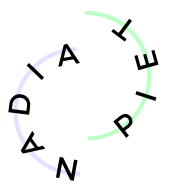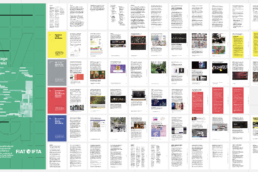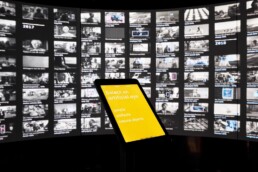Creative Interfaces for A/V Archives [Researcher in Residence @ Beeld & Geluid]
IMG: Visual overview of the report
From March – October 2023 I was working as researcher-in-residence with Beeld & Geluid and FIAT/IFTA to research Exploratory Interfaces for A/V Archives. The research is expressed into a report, which is published in two-fold:
- a linear downloadable PDF > which you can read + download here
- and a Miro board to serve as a living document – including the report itself, other links and notes from my research process, and hopefully future additions from the community – which you can access here
In short:
- The research took a case study approach and puts forth a diverse collection of inspiring examples & prototypes from various domains and disciplines showcasing different ways of interacting with (A/V) archives
- They’re set into 4 themes: Generous + Fluid Interfaces; Situated + Experiential Entry Points; Computational Sensing + Algorithmic Metadata; and Participatory Sense-Making + Storytelling
- The focus here is on the UX of archives and exploratory approaches; not to disrupt common practices such as keyword search but to explore new pathways for user interaction with A/V archives alongside the more conventional methods
IMG: Richard Vijgen, ‘The Future Through Artificial Eyes’, 2021. Picture: Aad Hoogendoorn. Source: tegenlicht.hetnieuweinstituut.nl
I’d like to give a final big thank you to everyone who has been a part of this work. I stepped into this project in February being deeply intrigued but knowing very little about archives. I had a very enjoyable & generative time diving deep into this realm and its caring practices while exchanging thoughts with so many kind and committed practitioners.
I hope the research proves to be a valuable resource that inspires and contributes to existing initiatives around living archives, exploratory approaches, and design experimentation with the archives and its materials.
If you find this report useful or interesting, please share it with your network or anyone you think might benefit from it. If time allows, enrich the research by adding your comments or links in the Miro (there’s a section for community contributions). And of course, don’t hesitate to reach out if you have any questions or ideas to build on this work in the future.


